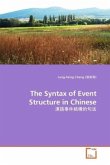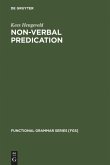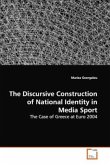This study investigates the verb copy construction
(VCC) in Chinese from diachronic and synchronic
perspectives. The VCC has been posited as a
post-verbal constraint (PVC). Given that the VCC and
PVC did not exist in Old and Middle Chinese, this
study examines how and why they emerged
diachronically, and proposes that they are in fact a
reaction to a syntactic and pragmatic/semantic
conflict. The VCC emerged as a perfect reconciliation
of this conflict. The other focus of the study is the
formal analysis of the VCC in Lexical-Functional
Grammar (LFG). In previous studies, the VCC has been
analyzed as a single-headed structure, with the first
VP as an adjunct to the second. Based on historical
evidence as well as facts regarding aspect attachment
and adjunct
distribution, I propose that the VCC is a coordinate
VP, with each conjunct as a head. I further propose
that the VP containing all subcategorized arguments
of the verb stands in a formal subsumption relation
to each other VP. This subsumption constraint
directly explains why that VP must be the first VP if
it occurs at all in the VCC.
(VCC) in Chinese from diachronic and synchronic
perspectives. The VCC has been posited as a
post-verbal constraint (PVC). Given that the VCC and
PVC did not exist in Old and Middle Chinese, this
study examines how and why they emerged
diachronically, and proposes that they are in fact a
reaction to a syntactic and pragmatic/semantic
conflict. The VCC emerged as a perfect reconciliation
of this conflict. The other focus of the study is the
formal analysis of the VCC in Lexical-Functional
Grammar (LFG). In previous studies, the VCC has been
analyzed as a single-headed structure, with the first
VP as an adjunct to the second. Based on historical
evidence as well as facts regarding aspect attachment
and adjunct
distribution, I propose that the VCC is a coordinate
VP, with each conjunct as a head. I further propose
that the VP containing all subcategorized arguments
of the verb stands in a formal subsumption relation
to each other VP. This subsumption constraint
directly explains why that VP must be the first VP if
it occurs at all in the VCC.








